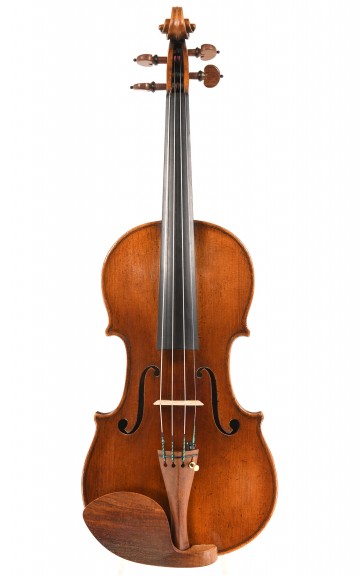The development of the violin and the violin family of stringed instruments
The history of the violin presents a number of enigmas to scholars, the first and foremost of which is the evolution of the instruments in the violin family. More specifically, this question involves the violin itself, the viola, cello and – with certain systematic limitations – the double bass. How exactly did medieval stringed instruments such as the the bowed lyre, the rebec, the giga, the crwth and the tromba marina emerge into the viola da braccio?  For what reasons and in what increments did the Baroque violin develop? It was used in Brescia during the days of Gasparo da Salò and ultimately defined a standard at the Cremonese workshops of the Amati, Stradivari and Guarneri families that underwent only minimal modifications over the centuries. Despite the fact that scholars to date have unearthed many interesting details of this epoch of violin-making history that is so vital to Western music, recreating a seamless depiction of the era remains elusive – and will stay that way, too, since it cannot be anticipated that any further instruments from this transitional period or additional documents from influential luthiers are yet to be discovered.
For what reasons and in what increments did the Baroque violin develop? It was used in Brescia during the days of Gasparo da Salò and ultimately defined a standard at the Cremonese workshops of the Amati, Stradivari and Guarneri families that underwent only minimal modifications over the centuries. Despite the fact that scholars to date have unearthed many interesting details of this epoch of violin-making history that is so vital to Western music, recreating a seamless depiction of the era remains elusive – and will stay that way, too, since it cannot be anticipated that any further instruments from this transitional period or additional documents from influential luthiers are yet to be discovered.
Content overview:
- The development of the violin and the violin family
- The violin's triumphal march through European musical culture
- From the Baroque violin to contemporary instruments
- Striking a balance between tradition and manufacturing
- The electric violin as the latest innovation in violin making history
The violin's triumphal march through European musical culture
What is known without a doubt is that after its "discovery", the violin spread from northern Italy to the musical culture at central European courts within a comparatively short time, usually in the hands of Italian musicians whose art stirred up demand for these fascinating new instruments and inspired the instrument makers they encountered along the way to replicate the new model. As a result, regional violin making schools, emerged such as the Saxonian Hopf violin and Alemanni violins as well as distinctive traditions like the Stainer violin which enjoyed a considerable range of influence and had a lingering effect on the instruments’ style.
From the Baroque violin to contemporary instruments
The most fundamental further optimisation of its era transpired in the late 18th and early 19th century: changes in performance standards encouraged the development of the violin as we now know it – as an instrument which still reflects the key elements of its classic role models of early Cremonese Baroque violin making art, yet featured a more dynamic and resonant sound. In spite of all of the craftsman innovations that occurred, the traditional model continued to assert itself, which amongst other things is evident in the fact that most of the Baroque violins which still existed during this period were modernised – a magnificent feat of both historic acknowledgement and damage.
Striking a balance between tradition and manufacturing
The modern violin model continued to differentiate itself further in the course of the 19th century. For example, variations could be observed in Italian, French, German and English violin making, and from the very beginning, serial manufacturing took place in factories and companies, dividing labour and specialising in response to the explosive global demand that began in the 19th century. In the late 20th century, these tasks largely shifted to Chinese manufacturers. Even though the differences between classic-artisanal master violins and mass-produced instruments are apparent, it does not seem appropriate to regard industrial violin making as a sign of a decline in traditional musical culture. For one thing, production at large and internationally active companies such as J. T. L. in Mirecourt, Schuster & Co. in Markneukirchen and Neuner & Hornsteiner in Mittenwald rapidly reached a more than respectable standard which met even sophisticated musical standards by offering suitable product lines. For another thing, these workshops served as incubators of entire generations of excellent luthiers who underwent their training at these companies and then went on to become successful masters of top-quality work themselves.
The electric violin as the latest innovation in violin making history
The newest chapter in the history of the violin is the electric violin (i.e. an electrically amplified violin). However, unlike the Baroque violin or contemporary instruments, it has not supplanted its predecessors; instead, it has contributed to a steadily growing niche of musical settings, especially in popular music.





